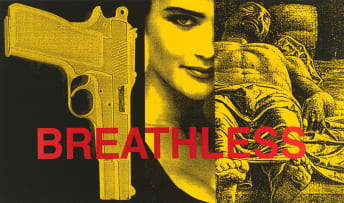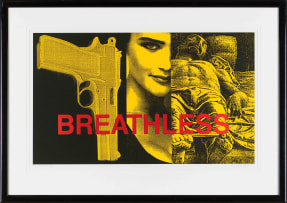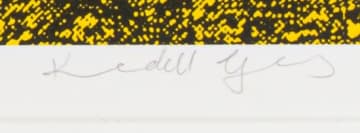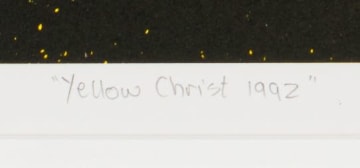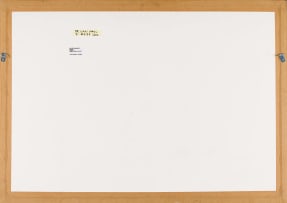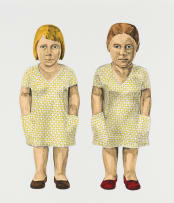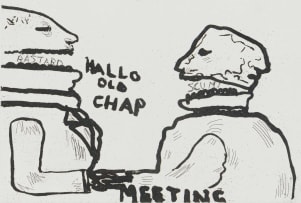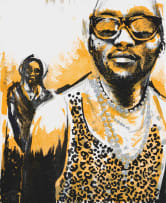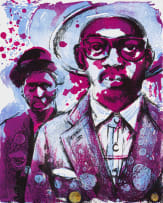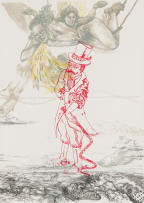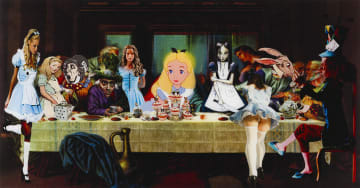Breathless (Yellow Christ)
Kendell Geers
About this Item
signed, dated 1992 and numbered 'Artist's proof I/II' in pencil and embossed with the Mark Attwood chopmark in the margin
Notes
By blowing up museum walls and burning down public monuments, Kendell Geers made a name for himself as an 'aesthetic terrorist'. He has disrupted the art world through such strategies as hurling bricks through a declared national heritage building (the Old Market complex in Newtown); urinating in Marcel Duchamp's famous found object, Fountain; and framing his own semen. His works are powerful evocations of terror and violence, eroticism and poetics. Breathless (Yellow Christ) is no exception.
Written across three apparently arbitrary images - a pistol, a half-portrait of a woman, and Andrea Mantegna's iconic Dead Christ (c. 1480), spliced together in a haphazard way - the word 'Breathless' suggests a link to French filmmaker Jean-Luc Godard's 1959 feature Á Bout de Souffle (translated as Breathless). Godard famously said: 'All you need to make a film is a girl and a gun'. Sex and violence often go hand in hand in the popular imagination, spurred on by the mass media. Here Geers throws religion into the mix. To be 'breathless' is to be in a state of anticipation, but also, literally, to be dead. A yellow tint over the silkscreened images gives an irreverent contemporary twist to Mantegna's iconic devotional image and imparts a pop art flavour to all three equally.
Geers harnesses the word and the images to invoke a presumed metanarrative, and a vague sense of unease. References to the mainstream mass media demonstrate that sex and violence can be everyday forms of political dissent. 'The mainstream [media] has stolen every weapon of the underground, from sex to violence', says Geers, 'and art has been reduced to simply another commodity designer fetish. What can one do today outside of total despair and capitulation? ... Instead of working towards the seamless, perfect image, I am trying to explore flaws, dirt, disruption, static white noise, and decomposition of the image or object. This fracturing both affirms the perfect image through its absence, and shifts the focus to other ways of understanding reality, on the other side of the comfort boarder. The sex and violence I use in my work and am interested in, and that I think remain effective weapons against bland consumerism, are not the sanitized clean poses of CNN but the dirty, gritty, white noise of a television set tuned to a bankrupt pirate station.'1
1. Interview with Jerome Sans, in Lobke van Speybroeck (2007) Irrespectiv: Kendell Geers, Barcelona: Bom Publishers, page 99.

